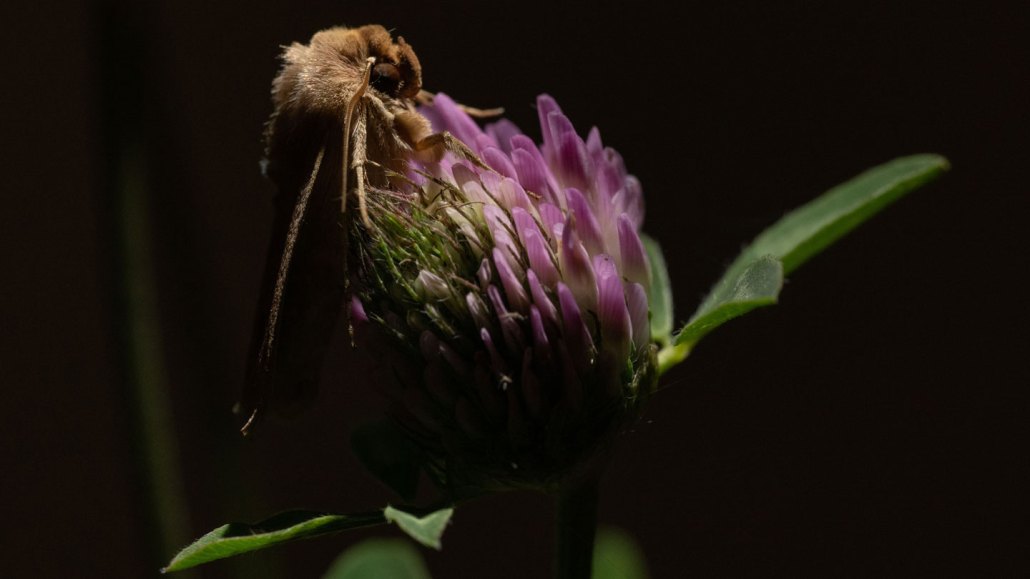When bees are away, moths come out to pollinate
The discovery that moths pollinate clover at night challenges a century of research

Many moths are nighttime pollinators of plants. But the insects, like this Mythimna farrago moth, weren’t known to be regular visitors of red clover flowers until now.
Jeff Kerby
Share this:
- Share via email (Opens in new window) Email
- Click to share on Facebook (Opens in new window) Facebook
- Click to share on X (Opens in new window) X
- Click to share on Pinterest (Opens in new window) Pinterest
- Click to share on Reddit (Opens in new window) Reddit
- Share to Google Classroom (Opens in new window) Google Classroom
- Click to print (Opens in new window) Print
By Jake Buehler
Bees are famous for pollinating flowers. And for about a century, they’ve gotten almost all the credit for pollinating red clover blossoms. But it turns out that bees don’t work alone. Moths do about a third of the visits to red clover flowers, a new study suggests. The overlooked insects work under the cover of night while bees are asleep.
Researchers shared that discovery in the July Biology Letters. The find highlights that scientists may still have much to learn about the night shift of plant pollination.
Jamie Alison led the research. He studies creatures that pollinate plants at Aarhus University in Denmark. Clover is a “valuable agricultural plant,” he says. Livestock feed on it. Lots of studies have looked at it. “Yet none of those studies have said anything about the possibility of moth pollination.”
Alison and his colleagues discovered moths’ role almost by accident. They had wanted to learn how plants and insect pollinators respond to climate change. So, the team set up 15 time-lapse cameras in the Swiss Alps. This allowed them to track pollinator visits to grassland plants, such as clover.
“You can’t feasibly have someone stand there for 24 hours and record … what is visiting a flower,” Alison says. “Fortunately, you can do that with cameras.”
From June to August 2021, the cameras watched 36 flowers of red clover (Trifolium pratense). Nine of the cameras took images in a slice of the afternoon and again at night. Another six snapped photos every five minutes.
The end result was more than 164,000 photos of red clover flowers. Just 44 of these caught visits by insect pollinators. About 60 percent of the nectar-seekers were bumblebees (Bombus). But another big fraction — 34 percent — were moths. These were mostly large yellow underwings (Noctua pronuba) that visited in the early morning hours.
Moths were known to pollinate many other plants, Alisons says. But their role in clover pollination has been overlooked. What’s more, Alison’s group found an unknown perk of moth pollination. Clovers visited by moths at night produced more seeds.
It’s clear “the role of nocturnal moths as pollinators of crops has largely been neglected,” says Daichi Funamoto. He was not involved with the research. But he does study pollination at the University of Tokyo in Japan. Future studies may show that many plants thought to be pollinated only by daytime insects are visited by moths at night, he says.
Alison’s team now wants to see if moths pollinate red clover in other places. For this work, the researchers want to equip cameras with artificial intelligence programs. Such programs would be trained to spot and sort types of pollinators at flowers.
“The future isn’t just cameras,” Alison says. “But cameras should be a big part of it.”







